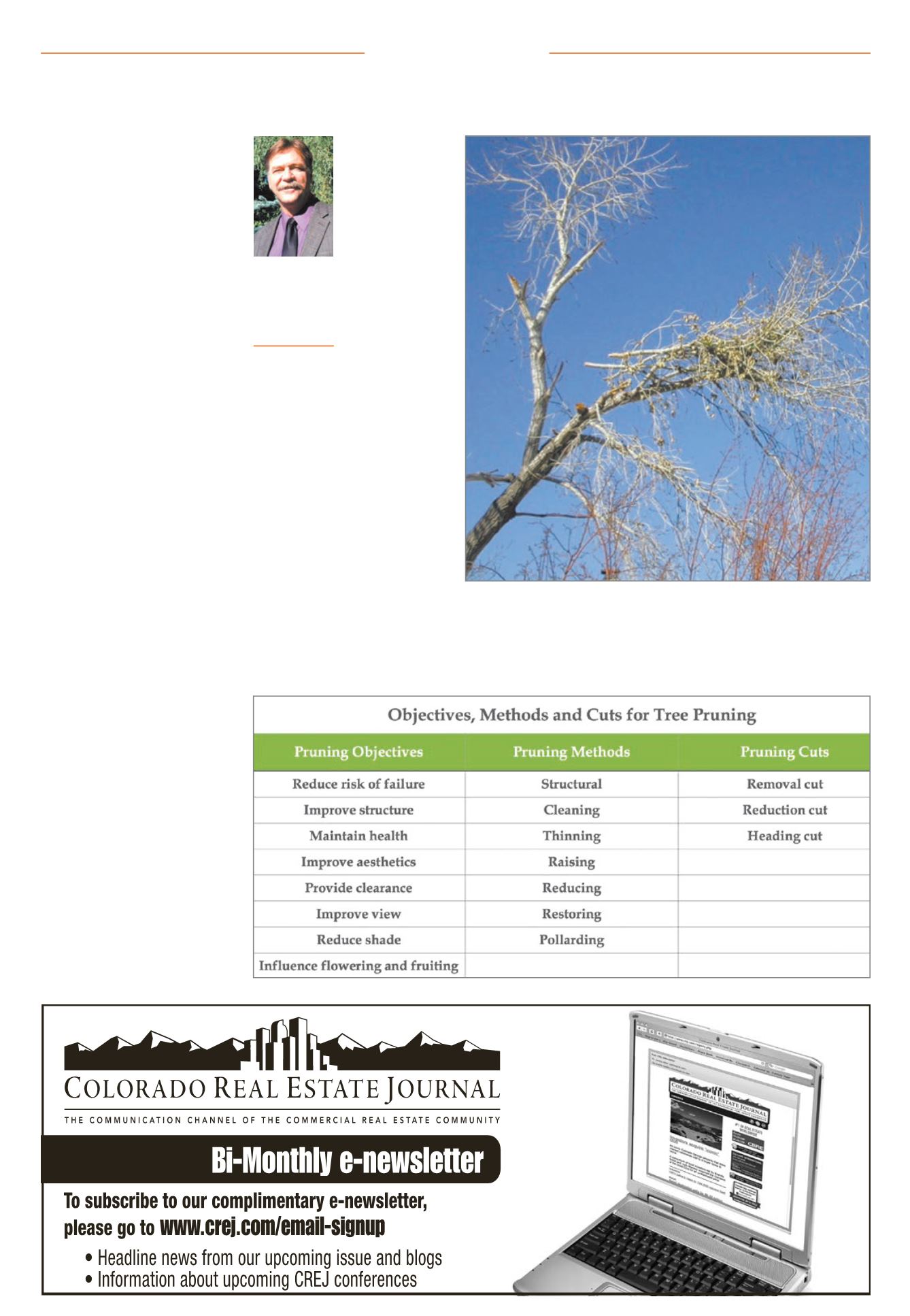

Page 22
— Multifamily Properties Quarterly — January 2015
W
e live in a changing world,
but true principles never
change in the midst of
time. “It is unwise to pay
too much, but it’s worse to
pay too little,” said John Ruskin, Eng-
lish author, architect and economist,
who lived from 1819 to 1900. “When
you pay too much, you lose a little
money. When you pay too little, you
sometimes lose everything, because
the thing you bought was incapable
of doing the thing it was bought to
do.”
By now budgets are set. Many
of you have a line item for your
landscape. However, in most cases,
your landscape budgets are a lump
sum and often it is spent with little
remaining when there is the greatest
need. The result typically is sending
out a request for proposal and being
placed in a position in which the bids
come in over budget. Now what?
Based on the quote referenced at the
beginning of this article, you are faced
with a decision: Do you select the
lowest bidder or study your options?
The first thing that is necessary is
an evaluation. It should be broken
down by risk, need, responsibility
and, finally, cost.
Risk.
Evaluating risk and the safety
of your tenants and property should
be your highest priority. Lawsuits
due to negligence will cost you the
most, not only financially but also in
bad publicity. Once on your property,
a qualified arborist has a duty and
responsibility to alert clients of any
potential risk that he or she notices.
This is often a difficult task since it
is impossible to make a complete
assessment from the ground. How-
ever, any obvious visible risks should
be included in his or her proposal.
Need.
The evaluation should be
based on need. Not every tree on the
property needs to be pruned at the
same time. Pruning trees that pose
a risk first and then prioritizing the
remaining trees in the landscape can
save money.
Responsibility.
Responsibility ulti-
mately is on the owners of the
property. As an on-site manager, it
is difficult to convey the message
to the owners concerning the risks
on the property and the need to
spend money. The difficulty often is
increased with out-of-town owners.
However, the responsibility is not
mitigated in either case of risk or
need.With that said, it is a good and
valuable practice to inspect your trees
several times each year. During the
winter months while the leaves are
off of the deciduous trees is a great
time to inspect your
trees. The spring
is also an effective
time for an inspec-
tion after the last
snowfall. (Yes, I
realize we live in
Colorado and that
can be well into
the month of May.)
The manager of
the property has
responsibilities that
work in both direc-
tions; a responsibil-
ity to keep owners
informed and ten-
ants safe.
Cost.
Finally, we come to the evalu-
ation of cost. I understand for many,
costs are considered the first and
primary responsibility. However, it is a
true axiom that there is a marked dif-
ference between cost and price. This
brings us full circle to John Ruskin’s
point. Price is what you pay at the
time of the service. Cost is what you
pay over time. If you choose the low-
est bidder, you may falsely believe
that you are getting the best deal.We
all know and understand that “you
get what you pay for.” It is easy to jus-
tify selecting the lowest price. Simi-
larly, at first it can look good to own-
ers that a manager saved X amount
of dollars with his or her decision.
However, invariably when the same
trees need to be pruned the following
year or two due to a lack of quality,
the cost over time has increased. Now
the manager is put in a position of
explaining why more money is need-
ed to perform the same task.
As a second-generation arborist and
operating in the green industry my
entire life, I have worked with both
the tenured and new manager. I have
seen this process implemented and
tens of thousands of dollars saved
by following these principles. In fact,
this same approach can be applied
to the decisions you make each day,
regardless of what aspect of the prop-
erty it affects.
s
Trees in my landscape: What is my approach?Maintenance
Matt Schovel,
ISA Certified
Arborist
Commercial sales
and development,
Swingle Lawn, Tree
& Landscape Care
Performing regular tree inspections is critical for multifamily complexes.
















